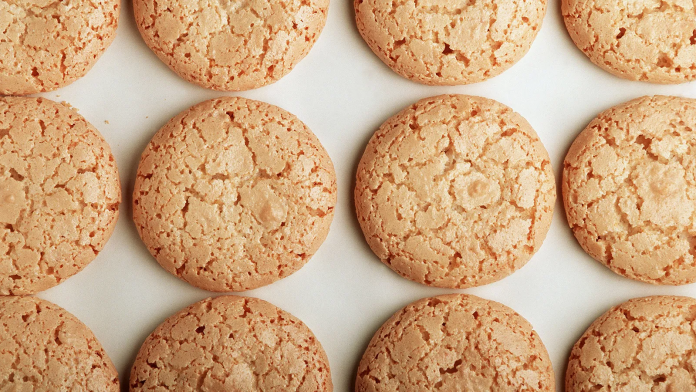In Lorraine, in the north-east of France, the small city of Nancy slumbered on the bank of the river Meurthe. Before the city awakened, a fog crept off the water and settled over the streets. The occasional roar of a scooter interrupted the silence, and two people sat on the steps of the famous Place Stanislas. But otherwise, the boulevards and squares were still.
It seemed hard to believe that anyone could be working, but a stone’s throw from the Hôtel de Ville, pâtissier Nicolas Genot toiled alone and unobserved to produce the veritable Macarons des Sœurs, using a recipe unchanged for more than two centuries that he alone holds in his head.
Later, as the frantic rush to offices and classrooms was underway, the fruits of his labour were displayed in the large glass window of his pâtisserie, the Maison des Sœurs Macarons. They sat alongside other local specialities such as the little jars of syrup-soaked baba au rhum cakes and cellophane bags of bright Bergamotes de Nancy candies, but it’s the macarons that are the reason for his shop’s fame.
They are essentially the top half of their more famous counterpart.
Unlike the better-known, pastel-coloured “Paris” macaron, which comes in a variety of shapes, colours and flavours, the Macarons des Sœurs have no ganache, are a uniform pale brown, are finely cracked on top and taste like toasted almonds. They are essentially the top half of their more famous counterpart.
Eating them is an exercise in history; the recipe has never changed in the 230 years since their invention, and it has only ever been passed to the succeeding pâtissier of the Maison des Sœurs Macarons. “The recipe and the secret are passed on orally, they’ve never been written down, and, in the contract with the new pâtissier, both sides swear to never teach the making to anybody else,” explained Genot. “The owner of the pâtisserie is the only one who makes the macaron, alone and away from prying eyes.”
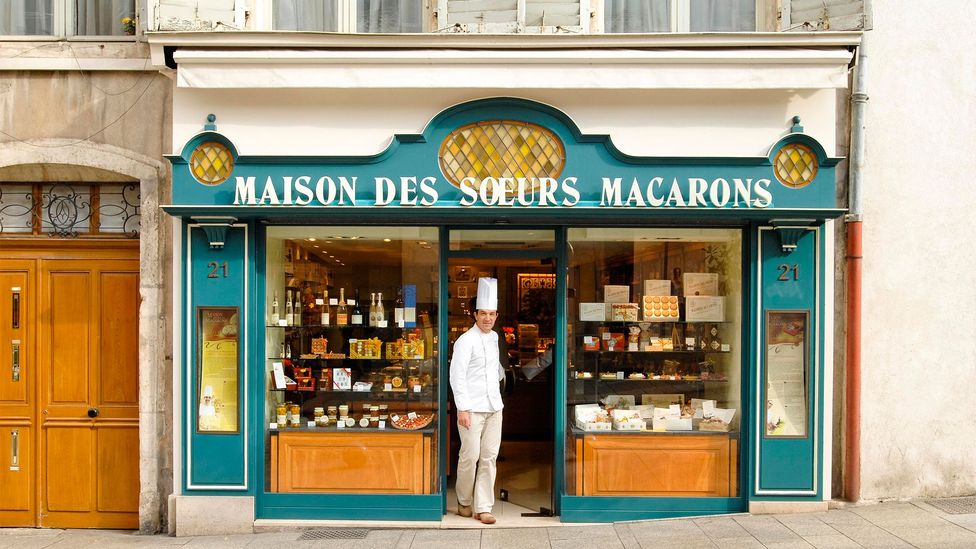
The recipe has only ever been passed to the succeeding pâtissier of Maison des Sœurs Macarons (Credit: Nicolas Genot/Maison des Sœurs Macarons)
The kitchens of monasteries and abbeys across Europe have been responsible for the invention of more than a few popular pastries and desserts, including the famous Portuguese egg tart, the pastel de nata, and the rum and vanilla flavoured cannelé from Bordeaux, to give just two examples. This baking ingenuity grew out of the reliance on the sale of products to raise money for the upkeep of their religious orders, as well as simply having the time and opportunity to experiment.
Similarly, the original Macarons des Sœurs were created by two 18th Century nuns, Marguerite Gaillot and Marie Morlot, who lived in an abbey in the heart of Nancy. It’s possible one of the nuns brought some form of the recipe with them upon joining the sisterhood and then perfected it. In 1792, a decree abolishing religious congregations led to their expulsion from the abbey. The nuns fled and took refuge with a local doctor, supporting themselves by making and selling their macarons.
Since then, the Macarons des Sœurs have been sold in the city without interruption. When Marguerite died, Marie passed the secret to her niece and the business remained in the family for another three generations. The business was passed to the Aptel family in 1935 and the premises moved from the site of the original pâtisserie to the location it occupies today. Jean-Marie Genot purchased the business in 1991 before passing it, and the secret of the macaron, to his son Nicolas in 2000.
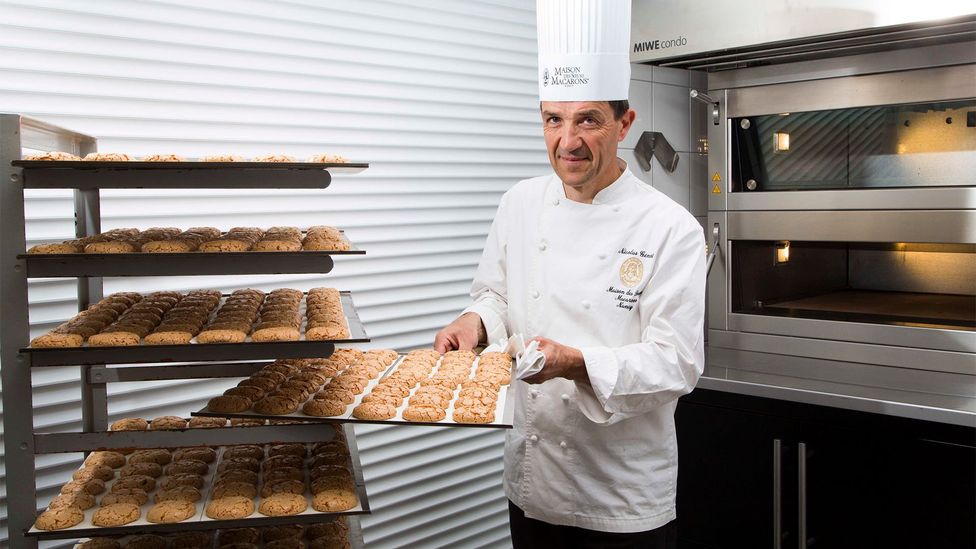
Pâtissier Nicolas Genot always use the same, top-quality ingredients in Macarons des Sœurs (Credit: Nicolas Genot/Maison des Sœurs Macarons)
The lasting success of the Maison des Sœurs Macarons is a testament to the recipe and the skill and quality of its production. “We always use the same, top-quality ingredients – for example, we refuse to buy almonds produced anywhere outside Provence and we’re investing in the production of almond trees to sustain our needs,” said Genot. “Our customers know this and come to us for this unique taste.”
The Macarons des Sœurs are a unique type of macaron
But while the Macarons des Sœurs are a unique type of macaron, the treat potentially existed many centuries before.
The word “macaronic” describes the mixing of different languages in speech, prose and poetry. The term is thought to have originated in 15th Century Italy, stemming from the word maccarona, a kind of stodgy dumpling, which is the provenance of the French word macaron. With a bit of artistic license, macaronic is the perfect word to describe the mixed origins of the macaron itself.
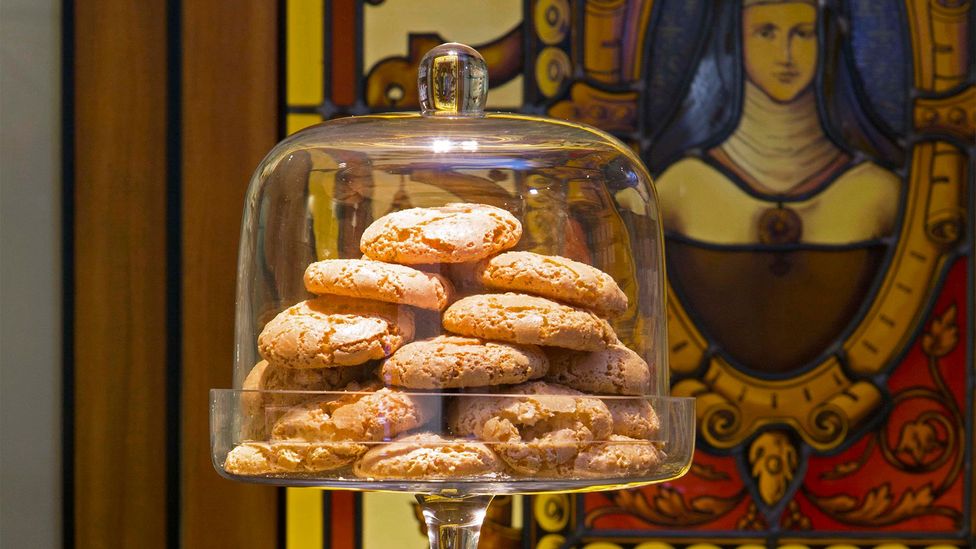
The original Macarons des Sœurs were created by two 18th Century nuns, Marguerite Gaillot and Marie Morlot (Credit: Nicolas Genot/Maison des Sœurs Macarons)
A widely held belief is that Catherine de’ Medici introduced the macaron to the tables of the royal court of France in the 16th Century, although food historian Marie Josèphe Moncorgé disputes this. “This is just a legend,” she said. “In general, pastries with almonds are often of Arabic origin, they then moved on to Catalonia and Italy before arriving organically in France.” Given the Italian origin of the word and the existence of recipes describing a macaron-like pastry brought to Sicily by Arab soldiers before the 13th Century, this seems likely.
Francois Rabelais’ satirical work, Gargantua and Pantagruel, is credited with introducing several new words to the French language. It’s also thought to be the first recorded mention of the macaron as a dessert, so we can be sure that it had made its way to France by the middle of the 16th Century. But it’s unlikely that the definite story of its origin will ever be known; as food historian Dr Annie Gray said: “There’s rarely a definitive answer, only ever a gradual development.”
However, what we do know for sure is that nearly 140 years after the two nuns started selling the sweet treat in Nancy, the macaron was transformed. In 1930, Pierre Desfontaines, a Parisian pâtissier, took two traditional macarons and sandwiched them together using ganache, creating the famous “Paris” macaron that can now be found all over the world, everywhere from the finest pâtisseries to McDonald’s.
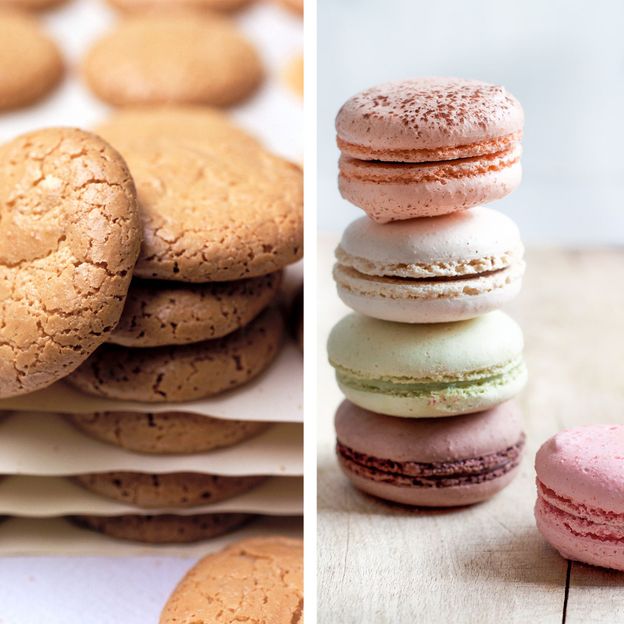
Macarons des Sœurs (left) and “Paris” macarons (right) (Credit: Caillaut Jacques/Getty Images; and Henry Sparrow and Kirsten Fowle/Getty Images)
Despite being overtaken in popularity by its successor, the legacy of the Macaron des Sœurs can still be seen in Nancy. Walk to the quartier Charles III and you can visit the Rue des Sœurs Macarons, named in honour of the site of the sisters’ original bakery; or wait by the gilded gates of Place Stanislas and watch passers-by clutching the white and gold boxes from the Maison des Sœurs Macarons. Its wider significance as a progenitor to the delicacy recognisable the world over as something quintessentially French is keenly felt by Genot.
“Of course, it’s a big responsibility,” he observed. “My mission, like that of my predecessors and my successors, is to respect, protect and value this tradition and this unique recipe.”
Culinary Roots is a series from BBC Travel connecting to the rare and local foods woven into a place’s heritage.
—
Join more than three million BBC Travel fans by liking us on Facebook, or follow us on Twitter and Instagram.
If you liked this story, sign up for the weekly bbc.com features newsletter called “The Essential List”. A handpicked selection of stories from BBC Future, Culture, Worklife and Travel, delivered to your inbox every Friday.

